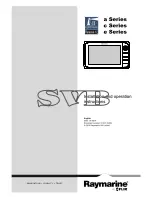
RUGGEDCOM ROX II
User Guide
Chapter 5
Setup and Configuration
Managing SNMP
255
Section 5.11
Managing SNMP
The Simple Network Management Protocol (SNMP) is used by network management systems and the devices
they manage. It is used to report alarm conditions and other events that occur on the devices it manages.
In addition to SNMPv1 and SNMPv2, ROX II also supports SNMPv3, which offers the following features:
• Provides the ability to send a notification of an event via
traps
. Traps are unacknowledged UDP messages and
may be lost in transit.
• Provides the ability to notify via
informs
. Informs simply add acknowledgment to the trap process, resending the
trap if it is not acknowledged in a timely fashion.
• Encrypts all data transmitted by scrambling the contents of each packet to prevent it from being seen by an
unauthorized source. The AES CFB 128 and DES3 encryption protocols are supported.
• Authenticates all messages to verify they are from a valid source.
• Verifies the integrity of each message by making sure each packet has not been tampered with in-transit.
SNMPv3 also provides security models and security levels. A security model is an authentication strategy that is
set up for a user and the group in which the user resides. A security level is a permitted level of security within a
security model. A combination of a security model and security level will determine which security mechanism is
employed when handling an SNMP packet.
Before configuring SNMP, note the following:
• each user belongs to a group
• a group defines the access policy for a set of users
• an access policy defines what SNMP objects can be accessed for: reading, writing and creating notifications
• a group determines the list of notifications its users can receive
• a group also defines the security model and security level for its users
The following sections describe how to configure and manage SNMP:
•
Section 5.11.1, “MIB Files and SNMP Traps”
•
Section 5.11.2, “Enabling and Configuring SNMP Sessions”
•
Section 5.11.3, “Viewing Statistics for SNMP”
•
Section 5.11.4, “Discovering SNMP Engine IDs”
•
Section 5.11.5, “Managing SNMP Communities”
•
Section 5.11.6, “Managing SNMP Target Addresses”
•
Section 5.11.7, “Managing SNMP Users”
•
Section 5.11.8, “Managing SNMP Security Model Mapping”
•
Section 5.11.9, “Managing SNMP Group Access”
Section 5.11.1
MIB Files and SNMP Traps
The current MIB files supported by ROX II can be downloaded from the
.
Summary of Contents for RUGGEDCOM RX1510
Page 32: ...RUGGEDCOM ROX II User Guide Preface Customer Support xxxii ...
Page 44: ...RUGGEDCOM ROX II User Guide Chapter 1 Introduction User Permissions 12 ...
Page 62: ...RUGGEDCOM ROX II User Guide Chapter 2 Using ROX II Using the Command Line Interface 30 ...
Page 268: ...RUGGEDCOM ROX II User Guide Chapter 4 System Administration Deleting a Scheduled Job 236 ...
















































